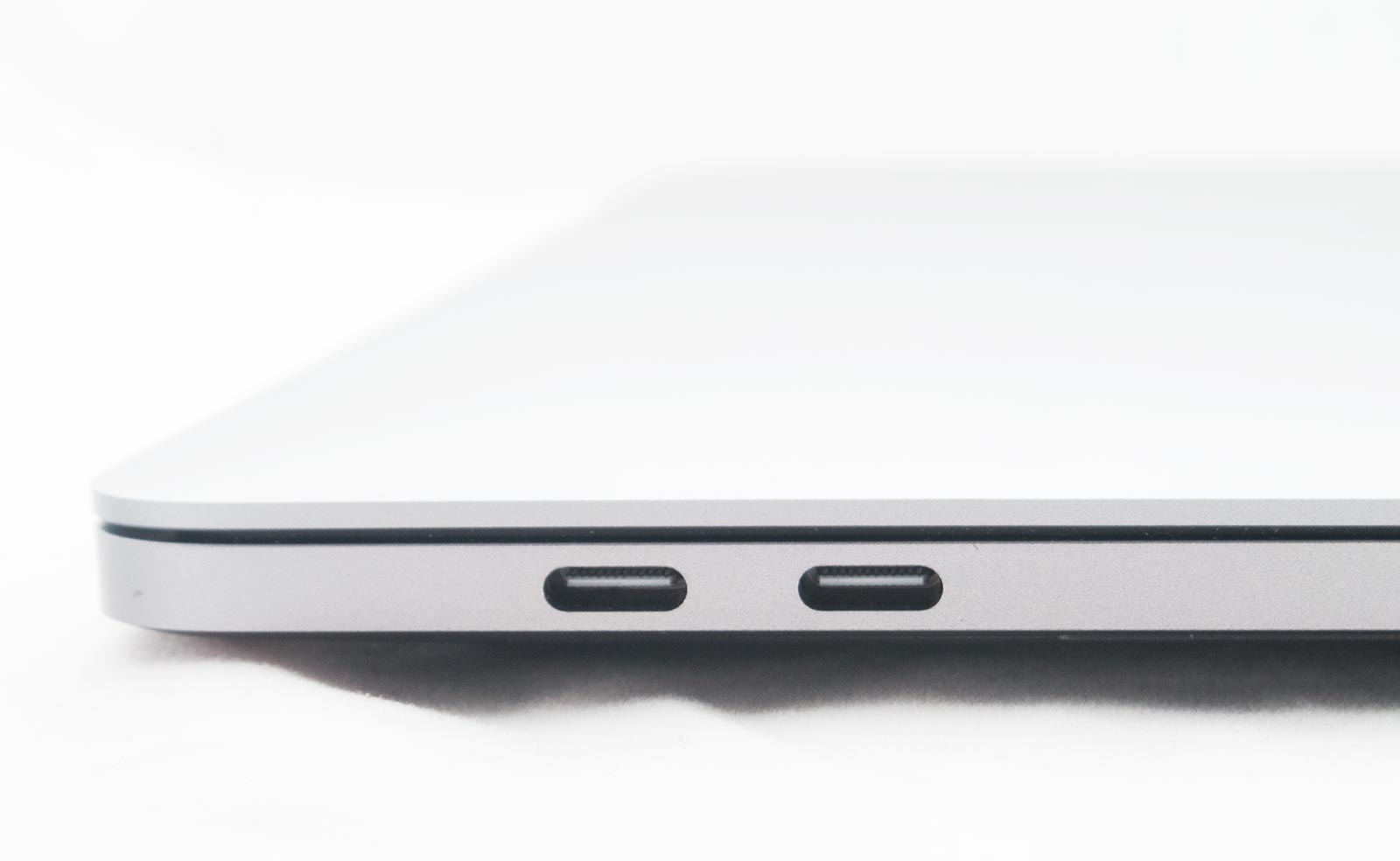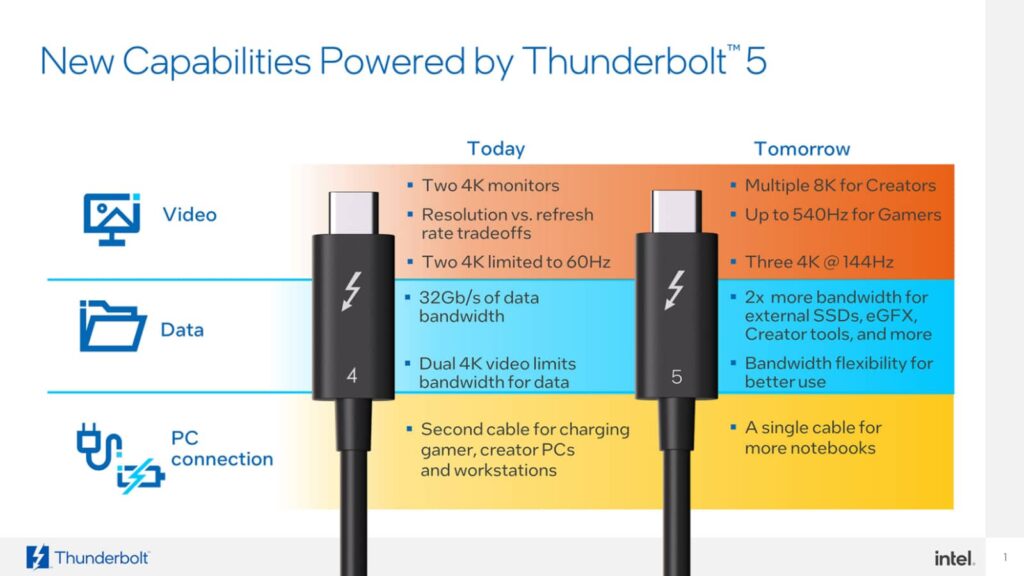Type C isn’t just coming to make the iPhone more compatible. It’s also seeing more high speed connectivity ahead of new computers next year.
With USB C now clearly the standard for phones, laptops, computers, cameras, headphones, and speakers, plus possibly a few other devices, finding the right power cable is essentially just as simple as making sure you have Type C.
The reversible connector can’t be incorrectly plugged in, and it is going to be everywhere, so chances are if you don’t have a plug, someone near you will. Great.
So what’s next? More speed, it seems.
The port will stay the same, but the technology behind it looks set to improve for computers, as Intel announces Thunderbolt 5.
A connection technology, Thunderbolt 5 follows on from Thunderbolt 3 and 4’s marrying of data and video, using the same port design as USB Type C and throwing in more connection capabilities behind it.
Thunderbolt ports typically cover both USB and Thunderbolt, allowing you to plug either USB devices or Thunderbolt devices in when you need them. They’re technically different, and not all USB ports will be Thunderbolt ports, but you can typically tell thanks to a lightning bolt symbol next to the port (which given Apple is retiring Lightning for USB-C isn’t confusing at all).
Both can be fast, with USB 3 capable of as much as 20 gigabits per second (2.5GB/s) while Thunderbolt 4 can handle as much as 40 gigabits per second. USB 4 is even faster again at 80 gigabits per second (10GB/s), and Intel’s Thunderbolt 5 looks to match it with bi-directional 80 gigabit speeds, and then some.
While the speed is high, it will also support up to 540Hz screens, handy for gamers who like super slick visuals, and it will also handle up to three 4K screens running at 144Hz.
Intel is also talking only needing the one cable for data, visuals, and charging, while offering more bandwidth for graphics cards, drives, and more.
As for when you’ll see Thunderbolt 5’s speed and capability in computers, that’s likely a next year situation. Intel notes that Thunderbolt 5 computers and accessories are expected to be available in 2024, and will be backwards compatible with the existing Thunderbolt ports.
You mightn’t get the speed or capabilities TB5 will offer, but the port will stay the same, making things just that little bit easier.







